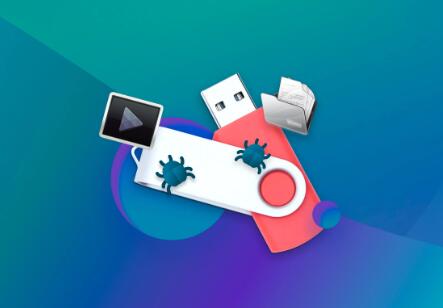These portable devices are convenient, compact, and widely compatible with most operating systems and hardware. Despite their many advantages, USB memory sticks are not immune to data loss. Files can be accidentally deleted, drives can become corrupted, or the device itself might fail due to physical damage or logical errors. This makes reliable USB memory stick recovery software an essential tool for individuals and businesses alike.
USB Memory Stick Data Loss
Data loss on USB memory sticks can happen for several reasons, including:
Accidental Deletion: The most common cause of data loss. Files can be deleted intentionally or unintentionally during transfer or file management.

Formatting Errors: Sometimes users format the USB stick to fix an issue or prepare it for another device, unknowingly erasing important data.
Corruption: Improper removal of the USB stick, power failures, or virus attacks can lead to file system corruption.
Physical Damage: USB sticks can be physically damaged due to wear and tear, water exposure, or impact.
File System Errors: Logical issues such as bad sectors or partition corruption can make the drive inaccessible.
Understanding the root cause of data loss is crucial because it helps determine the most effective recovery method and software.
Key Features of Effective USB Recovery Software
Not all USB memory stick recovery software is created equal. The best programs offer a mix of powerful features, user-friendliness, and reliability. Here are some key characteristics to look for:
Comprehensive File Recovery: Supports recovery of various file types including documents, images, videos, audio, and more.
Deep Scan Capability: Goes beyond basic scans to locate files buried deep within the drive’s structure.
Preview Function: Allows users to preview recoverable files before initiating recovery.
User-Friendly Interface: Designed for both beginners and tech-savvy users.
High Recovery Rate: Proven success in recovering lost or deleted files.
Support for Multiple File Systems: Compatible with FAT, exFAT, NTFS, and other file systems.
Cross-Platform Availability: Works on both Windows and macOS.
Secure and Read-Only Operation: Ensures no further data loss occurs during the recovery process.
Top USB Memory Stick Recovery Software Solutions
1. Panda Assistant
Panda Assistant is an innovative digital tool designed to simplify the process of recovering lost, deleted, or corrupted files across a wide range of storage devices. Whether you’re dealing with a formatted USB drive, a malfunctioning SD card, or a crashed hard disk, Panda Assistant provides reliable solutions with just a few clicks. Its intelligent system is built for users of all experience levels, making complex recovery tasks accessible and stress-free.
One of Panda Assistant’s standout features is its deep-scan capability, which can detect and recover files even from heavily damaged or reformatted devices. It supports an extensive list of file types from documents and spreadsheets to photos, videos, and application data ensuring that whatever you’ve lost, there’s a good chance Panda Assistant can bring it back. The software is compatible with various file systems including NTFS, FAT32. exFAT, HFS+, and more.
2. Disk Drill
Disk Drill is known for its user-friendly design and powerful recovery features:
Recovers over 400 file formats
Byte-level backups
S.M.A.R.T. disk monitoring
Supports FAT32. NTFS, exFAT, HFS+, and EXT4
3. EaseUS Data Recovery Wizard
A robust tool for both beginners and advanced users, featuring:
Quick and deep scans
Partition recovery
Filter by file type
Export/import scan results
4. Stellar Data Recovery
This software offers an intuitive UI and versatile recovery options:
Supports multiple languages
Recovers from formatted and corrupt drives
Preview files before recovery
Recovers photos, videos, emails, documents
5. PhotoRec
PhotoRec is an open-source tool known for powerful recovery capabilities:
Works on various platforms (Windows, Mac, Linux)
Recovers files from FAT, NTFS, ext2/ext3/ext4
Supports a wide range of file types
Step-by-Step Guide to Recover Data from a USB Memory Stick
Stop Using the USB Stick: Immediately stop using the device to avoid overwriting lost data.
Download and Install Recovery Software: Choose a reliable tool compatible with your OS.
Connect the USB Stick: Plug the memory stick into your computer’s USB port.
Launch the Software: Open the recovery program and select your USB device.
Scan the Device: Perform a deep scan to identify recoverable files.
Preview and Select Files: Use the preview function to choose which files to recover.
Recover Data: Save recovered files to a different location to prevent data overwriting.
Tips for Successful Data Recovery
Avoid saving new data to the USB stick before recovery.
Use high-quality USB ports and cables to prevent interruptions.
Regularly back up important files to multiple locations.
Run antivirus scans to prevent malware-induced corruption.
Preventive Measures for Future Data Loss
To minimize the risk of future data loss, consider the following best practices:
Safely Eject Devices: Always use the “Eject” function before removing USB devices.
Avoid Physical Damage: Store USB sticks in protective cases.
Keep Software Updated: Regular updates ensure compatibility and security.
Use Reliable Brands: Invest in high-quality, well-reviewed USB memory sticks.
Backup Regularly: Employ cloud services or external drives for redundancy.
About us and this blog
Panda Assistant is built on the latest data recovery algorithms, ensuring that no file is too damaged, too lost, or too corrupted to be recovered.
Request a free quote
We believe that data recovery shouldn’t be a daunting task. That’s why we’ve designed Panda Assistant to be as easy to use as it is powerful. With a few clicks, you can initiate a scan, preview recoverable files, and restore your data all within a matter of minutes.

 Try lt Free
Try lt Free Recovery success rate of up to
Recovery success rate of up to









